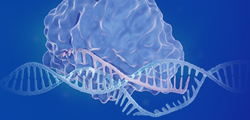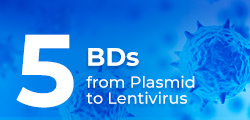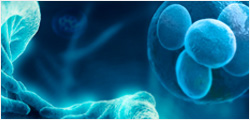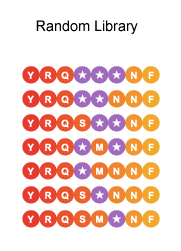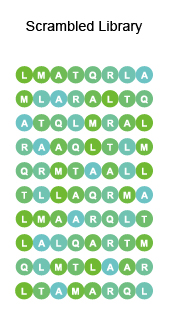-
REAGENT SERVICES
Hot!
-
Most Popular Services
-
Molecular Biology
-
Recombinant Antibody/Protein
-
Reagent Antibody
-
CRISPR Gene Editing
-
DNA Mutant Library
-
IVT RNA and LNP Formulations
-
Oligo Synthesis
-
Peptides
-
Cell Engineering
-
- CRISPR/Cas9 sgRNA
- CRISPR/Cas12a crRNA
- Prime Editing Guide RNA
- Base Editing Guide RNA
- HDR Templates
- gRNA + HDR Template Design Tools
- cGMP Guide RNA
- cGMP HDR Templates
- CRISPR/Cas Proteins
- CAR-T Knock-in Optimization Kit
- CRISPR Plasmids
- CRISPR gRNA Plasmid Libraries
- CRISPR Cell Lines
- Microbial Genome Editing
-
-
PRODUCTS
-
Most Popular Reagents
-
 Instruments
Instruments
-
Antibodies
-
ELISA Kits
-
Protein Electrophoresis and Blotting
-
Protein and Antibody Purification
-
Recombinant Proteins
-
Molecular Biology
-
Stable Cell Lines
-
Cell Isolation and Activation
-
 IVD Raw Materials
IVD Raw Materials
-
 Therapy Applications
Therapy Applications
-
Resources
-
- Pharmacokinetics and Immunogenecity ELISA Kits
- Viral Titration QC ELISA Kits
- -- Lentivirus Titer p24 ELISA KitHot!
- -- MuLV Titer p30 ELISA KitNew!
- -- AAV2 and AAVX Titer Capsid ELISA Kits
- Impurity Test ELISA Kits
- -- BSA ELISA Kit, 2G
- -- Cas9 ELISA KitNew!
- -- Protein A ELISA KitNew!
- -- His tagged protein detection & purification
- -- dsRNA ELISA Kit
- -- Endonuclease ELISA Kit
- COVID-19 Detection cPass™ Technology Kits
-
- Automated Maxi-Plasmid PurificationHot!
- Automated Mini-Plasmid PurificationNew!
- PCR Reagents
- S.marcescens Nuclease Benz-Neburase™
- DNA Assembly GenBuilder™
- Cas9 / Cas12a / Cas13a Nucleases
- Base and Prime Editing Nucleases
- GMP Cas9 Nucleases
- CRISPR sgRNA Synthesis
- HDR Knock-in Template
- CRISPR Gene Editing Kits and Antibodies
-
![AmMag™ Quatro Automated Plasmid Purification]() AmMag™ Quatro automated plasmid purification
AmMag™ Quatro automated plasmid purification
-
![Anti-Camelid VHH]() MonoRab™ Anti-VHH Antibodies
MonoRab™ Anti-VHH Antibodies
-
![ELISA Kits]() ELISA Kits
ELISA Kits
-
![Precast Gels]() SurePAGE™ Precast Gels
SurePAGE™ Precast Gels
-
![Quatro ProAb Automated Protein and Antibody Purification System]() AmMag™ Quatro ProAb Automated Protein and Antibody Purification System
AmMag™ Quatro ProAb Automated Protein and Antibody Purification System
-
![Target Proteins]() Target Proteins
Target Proteins
-
![AmMag™ Quatro Automated Plasmid Purification]() AmMag™ Quatro automated plasmid purification
AmMag™ Quatro automated plasmid purification
-
![Stable Cell Lines]() Stable Cell Lines
Stable Cell Lines
-
![Cell Isolation and Activation]() Cell Isolation and Activation
Cell Isolation and Activation
-
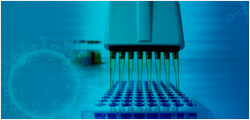 IVD Raw Materials
IVD Raw Materials
-
![Quick
Order]() Quick Order
Quick Order
-
![Quick
Order]() Quick Order
Quick Order
- APPLICATIONS
- RESOURCES
- ABOUT US
- SIGN IN My Account SIGN OUT
- REGISTER

![Overlapping Peptide Library Overlapping Peptide Library]()
Overlapping Peptide Library
Resources » Technical Resource Centers » Peptide Technical Resources » Peptide Library Design Tools » Overlapping Library
An overlapping peptide library can be used for linear or continuous epitope mapping, which can be used to figure out which part of a given protein or peptide contains the essential amino acids that contribute to its functionality. Characterized by two parameters, peptide length and offset number, each library is generated by dividing the original protein or peptide into many overlapping peptides of equal length. Optimum peptide length is 8 to 20 amino acids, and as a general guideline, a peptide must be at least six residues in length for it to cover an epitope. The offset number is the number of amino acid residues shared by adjacent peptides, and it reflects the degree of overlap.
Careful selection of the offset number and the peptide length can minimize experiment cost, while maximizing data value. The offset number is usually designed to be 1/3 of the peptide length. Long peptides will generate more epitope hits per peptide, but they are difficult to synthesize and the library will contain fewer peptides. Shorter peptides are easier and cheaper to synthesize, but will result in fewer epitope hits per peptide. The combination of low offset number and short peptide length generates the largest number of peptides, while the combination of high offset number and long peptide length produces the least number of peptides.
Problem Causes Solutions Wrong antibiotic was used or antibiotic concentration was too high - Ensure the correct antibiotic was applied to plates.
- Use only concentration recommended by competent cell or antibiotic manufacturer.
Competent cell viability is low - Thaw competent cells on ice and use immediately.
- Check expiration date of cells.
- Do not re-freeze cells.
- Do not vortex cells - gently tap to mix.
Few or no colony
transformantsDNA insert encodes protein that is toxic to cells - Use a lower incubation temperature (25 – 30°C).
- Use a cell strain and vector designed for tightly controlled transcription.
Heat-shock incubation too long - Reduce incubation time from 45 to 25 seconds.
Construct is too big - Use electroporation for vectors over 10 kb.
Too much ligation mixture was used for the transformation Ligation reaction components can inhibit transformation. - Dilute ligation reaction with TE buffer (up to 5 times).
Too much DNA in reaction - Use no more than 1-10 ng of DNA in 5 µl for a 100 µl reaction or in 1-3 µl for a 50 µl reaction.
Low ligation efficiency - Vector insert ratio not optimal. Use a vector:insert molar ratio from 1:1 to 1:10.
- Use a DNA concentration of 1-10 µg/ml.
Construct recombined with genomic DNA - Switch to a Rec A- cell strain.
No Plasmid in
Colony tranformantsAntibiotic concentration too low - Use antibiotic concentration recommended by manufacturer.
Antibiotic is degraded - Aliquot working volumes of antibiotic and avoid freeze-thaw cycles.
- Add antibiotic to liquid plate media after sufficient cooling.
No insert in colony
tranformants plasmidsVector re-ligation - Vector insert ratio not optimal. Use a vector:insert molar ratio from 1:1 to 1:10. Use a DNA concentration of 1-10 µg/ml.
- Dephosphorylate DNA with phosphatase to prevent re-ligation.
Sequencing of tranformants
plasmid reveals wrong
plasmid sequenceDNA insert encodes protein that is toxic to cells - Use a lower incubation temperature (25 – 30°C).
- Use a cell strain and vector designed for tightly controlled transcription.
Mutations introduced by initial PCR - Use a high-fidelity polymerase.
Inconclusive sequencing artifacts - Repeat sequencing reaction.
Applications of Overlapping Library
Scan an antigen sequence for epitopesScreen a protein for a substrateIdentify a T-cell epitopeStimulate T-cells in T-cell assaysMap antibody epitopesSearch for other binding sites within a given proteinOverlapping Peptide

References
- Sospedra M, Pinilla C, and Martin R. Use of combinatorial peptide libraries for T-cell epitope mapping. Methods. Mar 2003; 29(3): 236-47
- Gershoni JM, Roitburd-Berman A, Siman-Tov DD, Tarnovitski Freund N, and Weiss Y. Epitope mapping: the first step in developing epitope-based vaccines. BioDrugs. 2007; 21(3): 145-56
- Hemmer B, Pinilla C, Appel J, Pascal J, Houghten R, and Martin R. The use of soluble synthetic peptide combinatorial libraries to determine antigen recognition of T cells. J. Pept. Res. Nov 1998; 52(5): 338-45
- Sung MH, Zhao Y, Martin R, and Simon R. T-cell epitope prediction with combinatorial peptide libraries. J. Comput. Biol. 2002; 9(3): 527-39
- Paulmurugan R, and Gambhir SS. Combinatorial library screening for developing an improved split-firefly luciferase fragment-assisted complementation system for studying protein-protein interactions. Anal. Chem. Mar 2007; 15; 79(6): 2346-53

-



